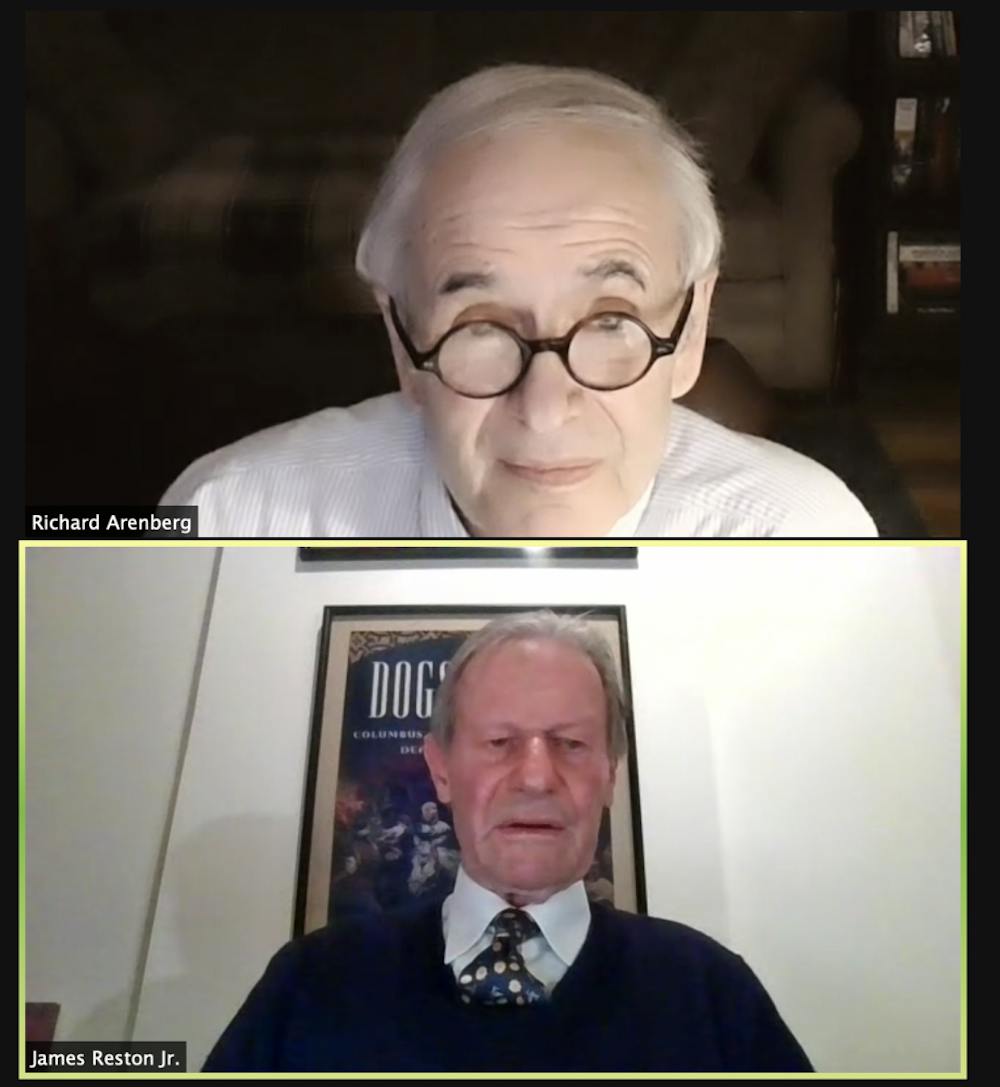Author James Reston, Jr. spoke at the Taubman Center for American Politics and Policy Wednesday about his most recent novel, “The 19th Hijacker,” which follows the story of one of the 19 men who perpetrated the Sept. 11 terrorist attack.
Lee Hamilton, one of the co-chairs of the 9/11 Commission, originally drew Reston to the story of a particular man, who served as Reston’s inspiration for the book’s central character. The book centers around a handsome, well-off Lebanese student training to be a pilot, who ultimately ended his life in the mud of Shanksville, Pennsylvania. The hijacker was very conflicted about the mission, and “almost pulled out of the operation” a month before 9/11 because “of a romantic relationship with a woman in Germany,” Reston said.
This facet of the perpetrator’s character primarily drew Reston to his story, and he immediately began to research the subject more thoroughly. Due to legal proceedings still occurring at Guantanamo Bay, all documents related to the hijackers were classified. But unwilling to abandon the story, Reston decided to write it as a novel, naming the pilot Sami Haddad and following his story through the eyes of his girlfriend Karima.
Though Karima’s character is fictionalized, the hijacker’s actual girlfriend played a central role in the months leading up to the attack. The night before 9/11, the pilot wrote his girlfriend a letter sharing his uncertainty. “There is such a letter in the novel, and it’s basically the authentic letter itself,” Reston said.
In Reston’s novel, Haddad also tape records his thoughts during the months before the attack “as a mechanism to try to decide whether he should go forward with the operation or if he should bail out and flee with” Karima.
The recordings, which Karima listens to throughout the book, detail all aspects of Haddad’s calculated and involved indoctrination. This, Reston said, was intentional: “The power of the book is its authenticity, that the reader … had the sense that this is really how it could have happened.”
What’s striking about “The 19th Hijacker” is that it offers insight into the humans behind 9/11, a perspective that is rarely tackled in books on the subject, Reston said. He acknowledged that most readers will ask the question, “Is this a sympathetic portrait?” The answer to that, he said, “is absolutely, definitively not.” But “is it a humanization of the character? Absolutely yes, it is. Because if you start, as a dramatist, by the notion that your character is evil from the beginning, then there’s nowhere to go with that story.”
Reston drew parallels between 9/11 and the Jan. 6 insurrection at the Capitol, cautioning against viewing the perpetrators of these events as so radicalized to the point that they are no longer human.
“If that’s the way you approach either 9/11 or January 6th” he said, “you’ll never understand what drives (the perpetrators), what makes them tick and maybe how to protect yourself against them as well.”
Reston is an accomplished and prolific author who, in addition to “The 19th Hijacker,” has written 17 other books and four plays. At the event, he touched on a variety of his works, which cover topics including Galileo, John Connally, the mass suicide at Jonestown, the Vietnam War and even baseball.
In the 1970s, Reston played an integral role in former President Richard Nixon’s famous Watergate interviews with David Frost, during which Nixon publicly acknowledged and apologized for the scandal. As a researcher for Frost, Reston found key documents fundamental to the outcome of the interviews. Reston’s reflections on the experience were eventually the basis first for the play “Frost/Nixon,” and subsequently for a movie by the same name.
When asked if there was a common thread running through all of his works, Reston referenced an essay by Virginia Woolf, in which Woolf lauds “fertile facts,” or facts that apply to character. In “The 19th Hijacker,” these facts surround Sami Haddad, who is deeply and horrifically misled to commit one of the greatest atrocities in history.
“What I wanted to do was portray a character who was in conflict,” Reston said, “who was not a straight line and who was not really radicalized in such a way that he couldn’t still make a decision in the end.”

ADVERTISEMENT




